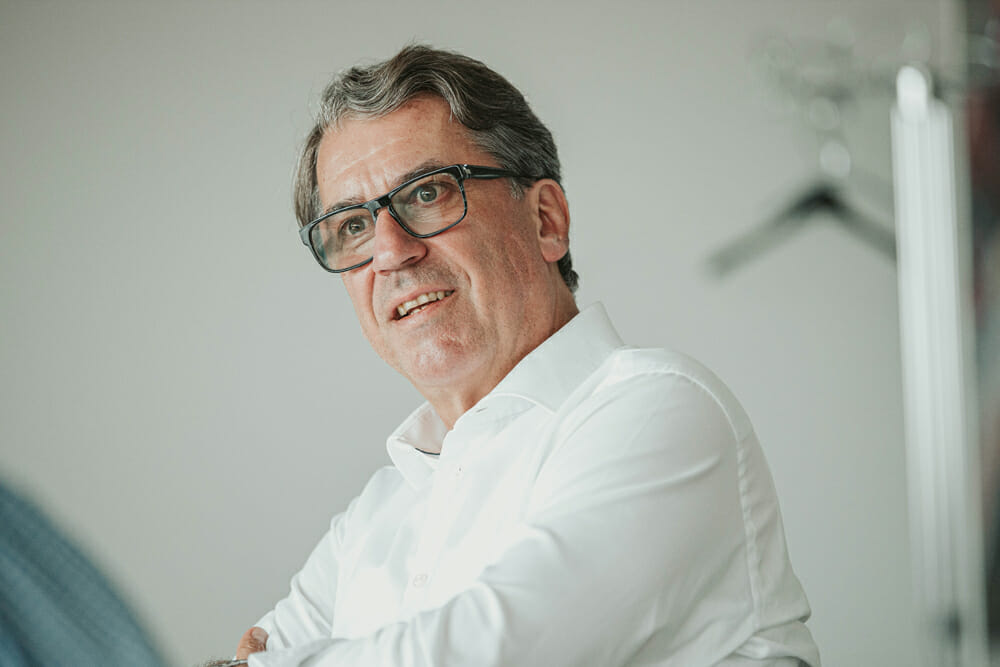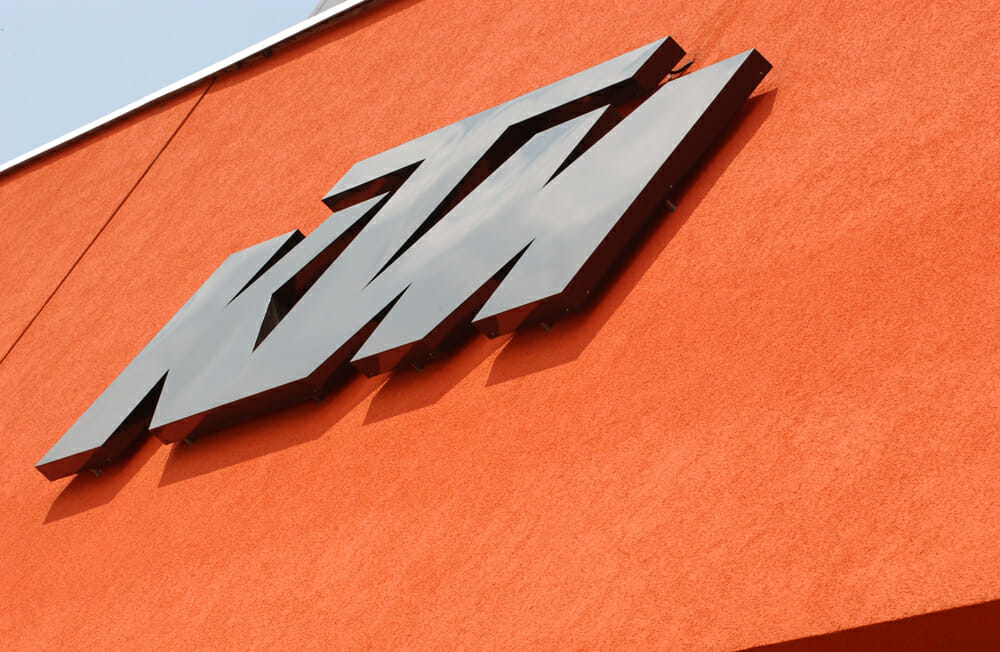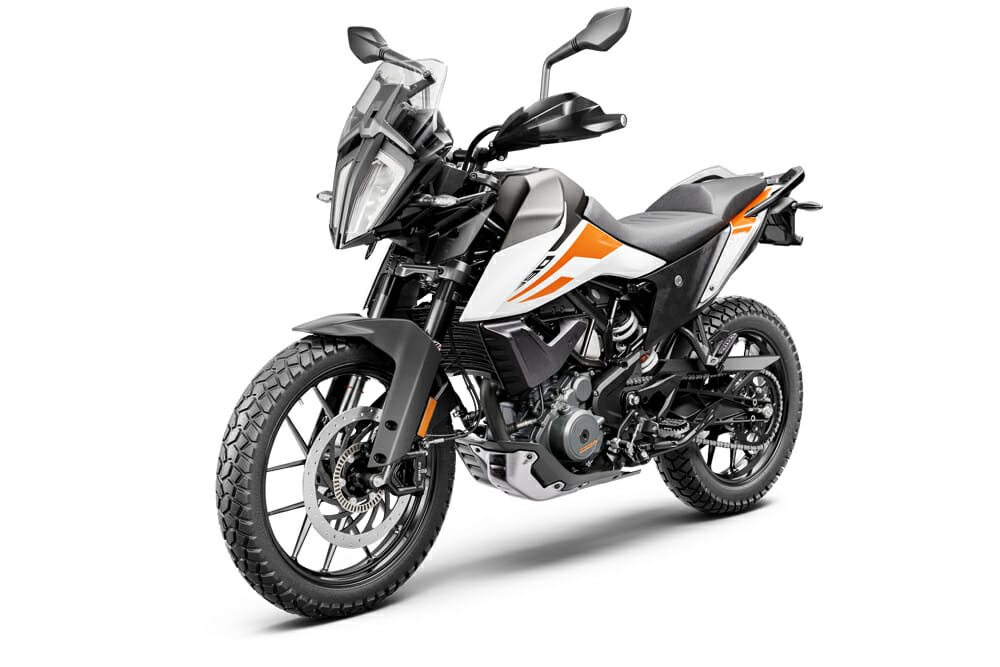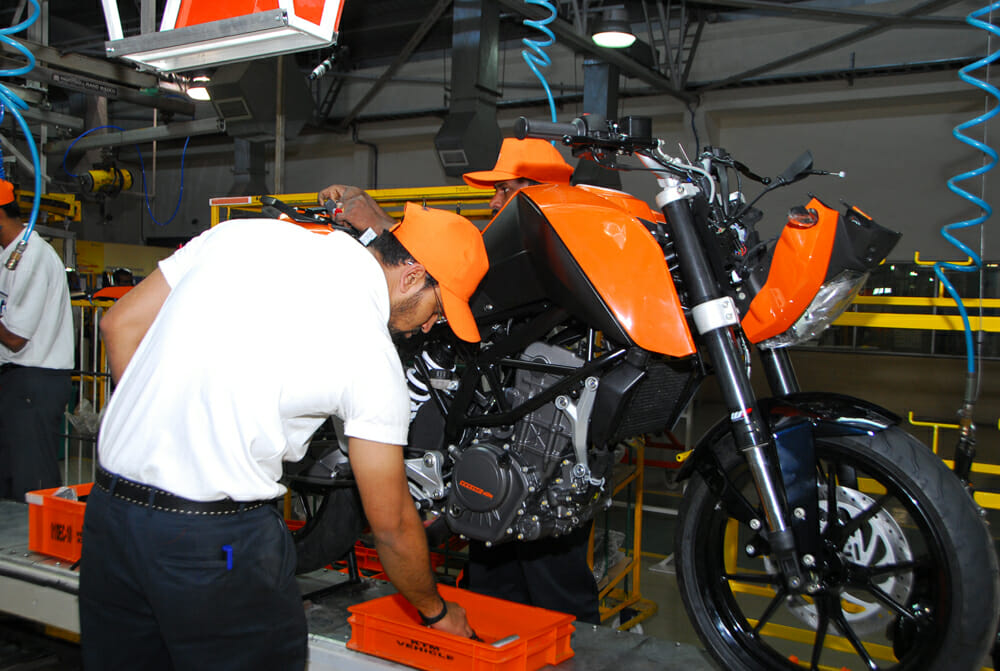Alan Cathcart | June 25, 2020
Post-coronavirus is full of opportunity! We recently got the chance to talk with KTM President/CEO Stefan Pierer who provided a typically realistic look at the post-Covid marketplace, and his plans to address the many issues and opportunities it presents.
 KTM President/CEO Stefan Pierer consolidated his position as the most significant figure in the European motorcycle industry.
KTM President/CEO Stefan Pierer consolidated his position as the most significant figure in the European motorcycle industry.
Photography KTM/Emanuel Tschann
The devastating effects of Coronavirus on the global economy are too great to quantify right now. But as things start to struggle towards a new normal, it’s evident that the motorcycle industry is facing a set of challenges which comprise both rehabilitation and opportunity. Who better to ask for a frank appraisal of the effects of the pandemic, as well as an assessment of what the future holds, than the majority owner of Europe’s largest motorcycle manufacturer by volume, KTM’s Stefan Pierer?
KTM finished last year on a continued high after yet another record year which saw sales spiraling up to 280,099 motorcycles in 2019, a further all-time record for the company. It is up a further seven percent compared to the previous year in comprising 234,449 KTM machines and 45,650 Husqvarnas. Its President/CEO Stefan Pierer consolidated his position as the most significant figure in the European motorcycle industry, a position underlined by the renaming last October of the overall holding company formerly called KTM Industries, now known as Pierer Mobility AG.
Thanks to its continued focus on innovation, the Pierer Group may justifiably claim to be the European PTW (powered two-wheeled) industry’s leader in technology, emphasized by the outright takeover last October of the German company Pexco, previously its strategic partner in manufacturing electric bicycles. Another strategic partnership, its long-established link with Bajaj Auto, India’s second largest indigenous motorcycle manufacturer, which owns 47.99% of KTM AG equity, with the remaining 51.67 % of the voting rights held by Pierer Mobility, continues to strengthen the Austrian company’s competitiveness in global markets.
 Pierer says KTM did not layoff anyone during the coronavirus pandemic, but, rather, KTM actually hired 40 people.
Pierer says KTM did not layoff anyone during the coronavirus pandemic, but, rather, KTM actually hired 40 people.
Stefan, how has the unexpected impact of the Covid-19 crisis affected KTM, especially after another record year in 2019?
It was not unexpected! As a global company, we have connections around the world, and we already recognized very early on that there was a problem coming out of China, because this was preventing our customers in Asian markets buying our products. When it began causing problems with our Italian supply chain providing parts for the bikes we build here in Mattighofen, I had originally planned to halt production in the middle of March. But our young Austrian Chancellor Mr. Kurz beat me to it, and on March 11 he announced a lockdown, one of the first European countries to do so. So, since March 16 we had a total stop in production, until thanks to the resumption of manufacture by Italian supplier companies, we could restart motorcycle production on May 11 under the Austrian short-time working system. Then on May 18 we got back on track at full speed, with 100% of our 3639 employees in Austria working full time.
Have you had to lay anybody off full time?
No. In fact, we have already hired an additional 40 people! Honestly speaking, we are now in a very favorable situation compared to other manufacturing industries like automotive or aircraft, where it’s a nightmare. For us, fortunately, the powered two-wheeler industry is actually flourishing to a certain extent after corona[virus]. In all countries which have reopened since the lockdown, there’s a very positive demand for our products.
It seems that in several countries the public has discovered, sometimes for the first time, that powered two-wheelers/PTWs are a very convenient way of commuting to work both quickly and affordably.
Yes, you’re right. That’s one of the experiences that we’ve got, starting with China. China was a couple of weeks ahead of us in the lockdown, and retail sales there are double digit ahead of last year. It’s the consequence of so-called social distancing—nobody wants to join the public transportation system if they can help it, so cars and especially PTWs are benefiting, but particularly two-wheelers because of the increased traffic jams. If you look to Europe as a specific market, the electric bicycle in Central Europe is booming massively, both in the small-displacement and midsize-displacement versions. So, there are two price points where we are experiencing very, very positive growth, up to 10,000 euro, and up to 15,000 euro. But the very expensive big-displacement motorcycles are currently at a bit of a standstill, because the eye of the customer is for sure looking ahead, and these will maybe be facing problems post-corona[virus].
How has Covid-19 affected KTM’s global market positioning?
I would say, first of all, that in every area of the globe we are facing the same corona[virus] consequences, so lockdown and other such restrictions. So, exiting it is like a competition where everybody gathers at the start line, and for the quicker ones, or the braver ones, there’s the chance to take the holeshot and gain market share, and that’s my ambition. Sooner or later I want to become number one in Europe in terms of registrations. We are already on the podium, so moving up a step is my next ambition! Secondly, my vision is to enlarge our dealer network in every country, because the way we are treating our dealers plus our very wide model range makes switching to the KTM Group very attractive for dealers currently distributing a competitor’s products. We are already getting some of them knocking on our door, and I think a crisis like this one is also a chance to show everyone how to do the best you can do. And fortunately, the PTW industry is on a positive upswing after corona[virus].
 Small-displacement motorcycles, such as the new KTM 390 Adventure, is in high demand right now all around the globe.
Small-displacement motorcycles, such as the new KTM 390 Adventure, is in high demand right now all around the globe.
What effect will your shutdown at the Mattighofen factory have on your overall sales projections for 2020? Do you envisage being able to regain those missing motorcycles?
Due to the fact that we were closed down for two months in Austria, we’re missing around 30,000 units of production. For sure, we will try to produce some of those missing quantities, but we will never manage to claw back all of the lost 30,000 motorcycles. We can hope to get back maybe 15,000 units this calendar year if we are doing additional shifts and reducing the summer break. But for sure we and our dealers will be missing 15,000 potential sales, or even as many as 20,000. However, our retail demand looks very good, so I expect by the end of this year that we will have at least the same level of overall sales as we did the year before. And there’s also a very interesting spinoff from the crisis, which is that off-road motorcycling is bouncing back very strongly, especially in the USA. By spending less than 10,000 euro, you can get completely away from the coronavirus whenever you choose, you can do it alone with no worries about social distancing, you can leave the risks of urban density and visit the countryside, always with the best possible protection wearing your helmet. That’s the main reason why we’re facing huge demand in the USA for our off-road models.
To the point that some of your dealers there are apparently concerned about running out of product. Will you be able to supply them?
Yes, we are working very hard on that right now. It’s a nice problem to have! So, in June already we have additional shifts planned to fill up the shipments and get our products to the U.S. again on a continuous flow to meet demand. It’s a good situation, but you have to find a way to handle it, and you especially have to explain to suppliers how they must keep parts flowing, things like that. But it looks good.
Once your production line started to run again, what models were getting the highest build priority?
We are already on the high point of the on-road season, so that means the new 890R is a priority, also the new 1290 Super Duke. We have strong demand for both of them, so we have to try to meet that, they’re the priority models. In terms of off-road, just about anything the U.S. market needs is a high priority.
In that connection, did Bajaj shut down for the same length of time as KTM?
Yes, they were also totally stopped for six weeks. However, what’s happened in India is interesting. India has had one of the toughest shutdowns, with military control to ensure it’s obeyed. But they have certain Red Zones where the virus is more active than others, so it’s very problematic. However, while Bajaj got permission to open their plants in the middle of May, it took more than a week to re-establish the supply chain, and if you have a supplier in the Red Zone then they’ll still be closed, and if you miss just one part in a motorcycle, you don’t have a complete finished product to ship. But in India they also closed the motorcycle shops, and there’s also an extra complication, because at the same time as all this is going on, they’re introducing extremely strict emission rules by going in one fell swoop from BS4 to BS6. Essentially, Mr. Modi is trying to drive everyone to using electric vehicles.
 Bajaj, the plant in India which builds KTM’s 390 Adventure, was shut down for six weeks. It has since re-opened.
Bajaj, the plant in India which builds KTM’s 390 Adventure, was shut down for six weeks. It has since re-opened.
But one of your biggest sales hits this year is the new 390 Adventure, which, of course, is made in India. Has there been a problem with supply of that?
Fortunately, corona[virus] only shot up after the first batch of the model was made and shipped, so we still had something to meet initial demand with. But, fortunately, Bajaj is restarting with export model production as its primary focus, so KTM and Husqvarna have priority, and we expect to be able to meet the huge demand we have for this model with only a short delay in supplies. It’s been very gratifying to see how well it’s been received, as a proper small-capacity dual-purpose model, not something just pretending to be that.
KTM has gained market share in the USA steadily, from 2.6% in 2009 to 8.6% in 2019, but this has been achieved with a relatively narrow product range compared to the Japanese. But for this year, you’ve added the 390 Adventure and the electric minis. Are there any other entry-level categories that you’ll be introducing new models for with KTM and Husqvarna?
One of the things we’ve learned out of the corona[virus] situation is that the small-displacement models have become a very important part of the market, even in the USA. The Adventure 390 is leading this change, and for sure also Husqvarna models with small displacements.
Talking about small- to midsize-capacity product, has development of the new range of 500cc twin-cylinder models that will be built by Bajaj been slowed down at all by Covid-19? When do you expect to launch these?
It’s the opposite! Due to the Covid experiences, we sped up the project, because the 500 class will become an all-important segment, especially in developed markets as an A2-licence bike. And in the so-called emerging markets it’ll be the premium segment, so it’s very important for our 125/200 and 390 Duke customers to trade up to. This is being 100% developed at the Bajaj R&D center in Pune, but supported by our R&D guys. It’s a parallel-twin similar to the format we have on the 790/890, only 500cc.
When do you expect to launch these?
Still in two years’ time to get the first product, so 2022. But we will see several different models, with Duke and the Adventure versions in each of the KTM and Husqvarna lines.
 Pierer says the pandemic has delayed its plans to go twins racing in AFT. Looks like that won’t happen for another year.
Pierer says the pandemic has delayed its plans to go twins racing in AFT. Looks like that won’t happen for another year.
As far as the growth of the midsize market is concerned, with the new 500cc to 890cc model, do you feel this is likely to suck away business from your higher-end, larger-capacity products like the 1290 Super Duke etc.?
Currently it’s the case that, post-corona[virus], there is not the demand for the big-displacement models offered by no matter which manufacturer that you have for the small- and midsize-displacement bikes. And that will go on for however long it takes to resolve the crisis, which we expect will be by the end of 2021 at the very earliest. If you go to the car industry, there the manufacturers forecast up to 20% less demand after corona[virus] up till the end of 2021, and throughout that period, for sure, a small-displacement and medium-displacement motorcycle will be what people want to purchase, with less demand for the big bikes. I don’t know exactly what percentage that will be, it’s too early to say, but that’s our expectation.
Are you still working on introducing a twin-cylinder on-road Husqvarna model range in 2022?
Yes, definitely. It’ll be an adventure-type model like the Norden 901 concept bike we showed at EICMA last year. It’s on the way.
Will there also be a 100% street version, rather than a dual-purpose model?
We are focusing in the first place on dual purpose. Street may come later.
Will the production Norden come with the 790 or the 890 engine?
890.
Are you still planning to enter American Flat Track racing in the USA with a twin-cylinder Husqvarna?
That was our ambition planned before corona[virus], but things have changed since then, so we’ve postponed it for at least a year. We’ll look at how AFT is developing before deciding when to join in. It’s not canceled but it’s postponed. We’re still participating in AFT Flat Track with our single-cylinder teams, and both brands are very successful. It’s perfect for us, because it’s a ready-to-race product coming out from motocross, so it’s working well, and fulfils our objective of allowing the customer to compete against the factory teams. But, for sure, the twin is postponed for another year.CN
